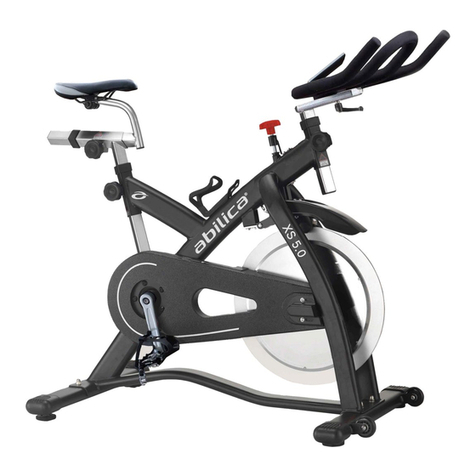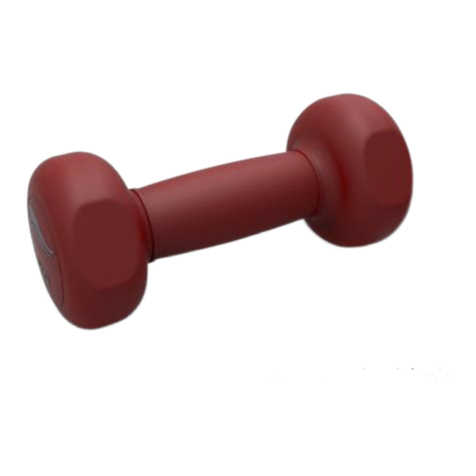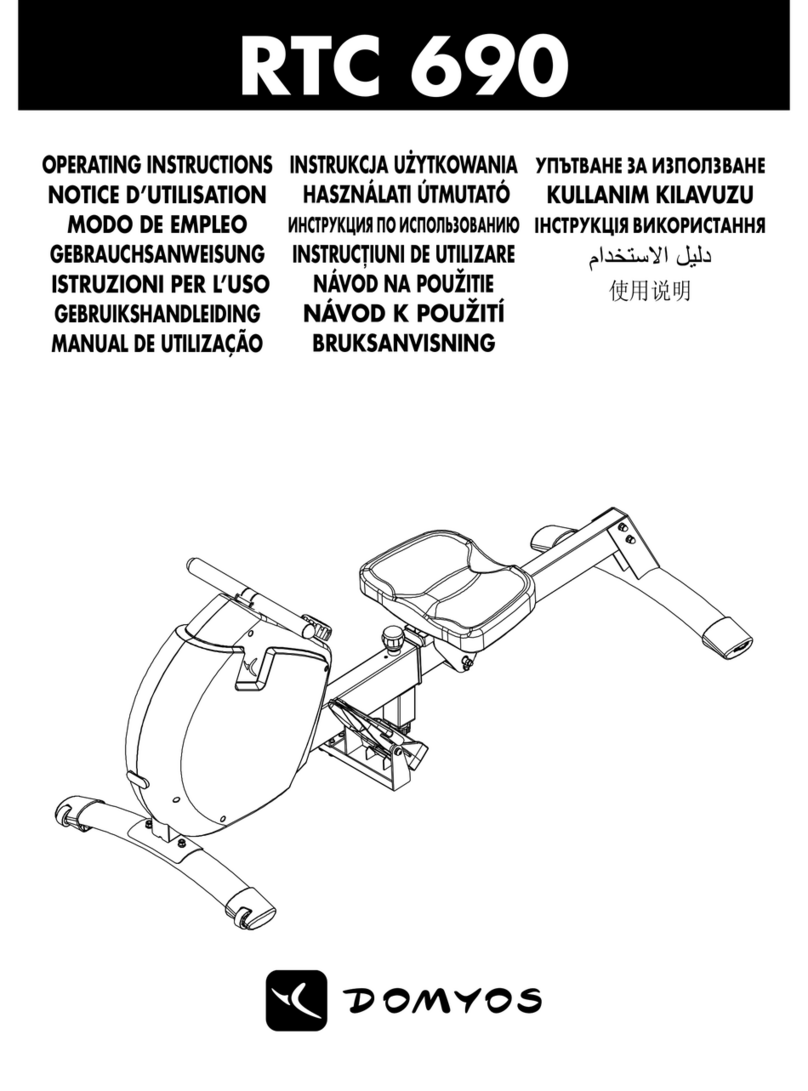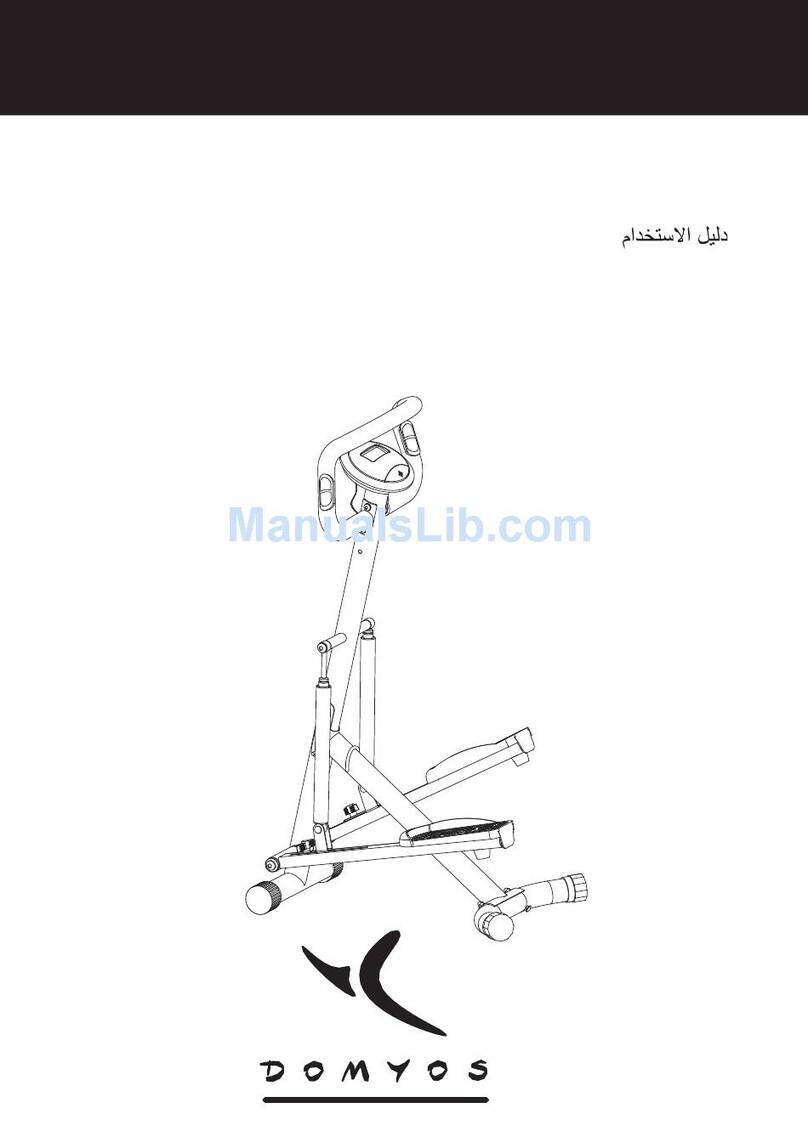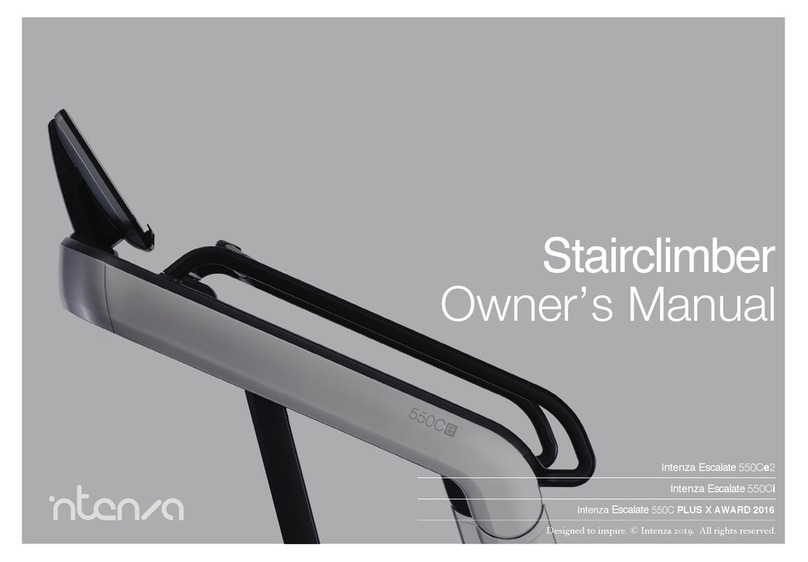BluCore Corsuit User manual


© 2014 BLUCORE PTY LTD
ALL RIGHTS RESERVED
The Corsuit is Patent Pending.

© 2014 BLUCORE PTY LTD. BACK TO CONTENTS
ALL RIGHTS RESERVED.
2
CONTENTS
CLICK ON HEADING TO JUMP TO SECTION
1 INTRODUCTION...............................................................................................................................................................3
1.1 TERMINOLOGY ......................................................................................................................................................4
1.2 POSTURE...............................................................................................................................................................5
1.2.1 Land Posture:
Neutral Spine
.....................................................................................................................6
1.2.2 Swimming Posture:
Flat Spine
.................................................................................................................7
1.2.3 Things to Note About Posture ..................................................................................................................9
2 TRAINING PRINCIPLES................................................................................................................................................ 10
2.1 SWIMMING TECHNIQUE TRAINING .................................................................................................................. 10
2.1.1 Contrast Swimming ................................................................................................................................ 11
2.1.2 Kick............................................................................................................................................................ 13
2.1.3 Underwater Breakout.............................................................................................................................. 15
2.1.4 Streamline Position................................................................................................................................. 17
2.1.5 Dive............................................................................................................................................................ 18
2.1.6 Backstroke Start Position ......................................................................................................................20
2.1.7 Turn.............................................................................................................................................................21
2.1.8 Finish..........................................................................................................................................................23
2.2 ENERGY SYSTEM TRAINING..............................................................................................................................24
2.2.1 Lactate State Training.............................................................................................................................24
2.2.2 Aerobic State Training .............................................................................................................................24
2.2.3 Hypoxic State Training.............................................................................................................................24
3 SPORTS.........................................................................................................................................................................25
3.1 SWIMMING (POOL).............................................................................................................................................25
3.1.1 Swimming Strokes...................................................................................................................................25
3.1.2 Distances ................................................................................................................................................. 31
3.2 SWIMMING (OPEN WATER) ..............................................................................................................................32
3.3 TRIATHLON......................................................................................................................................................... 33
3.4 DRY LAND / STRENGTH AND CONDITIONING ..................................................................................................34
3.4.1 Bracing ...................................................................................................................................................... 35
3.4.2 Bracing and Control................................................................................................................................. 37
3.4.3 Bracing, Control and Resistance........................................................................................................... 41
4 EXAMPLE SESSIONS ...................................................................................................................................................47
JOIN US

© 2014 BLUCORE PTY LTD. BACK TO CONTENTS
ALL RIGHTS RESERVED.
3
1INTRODUCTION
The Corsuit is a simple, yet advanced tool for developing posture, body position
and core strength in swimming. The Corsuit Advanced User Guide explores
some of the most effective ways it can be incorporated into your training.
The Corsuit is worn around the waist, and provides the user with tactile
feedback on their postural alignment. If the user is well aligned, they will feel
the Corsuit fit comfortably, with pressure evenly distributed along the length of
the device. If the user begins to fall out of alignment, they will feel the pressure
redistribute to the ends of the Corsuit, signalling to the user that they need to
realign themselves.
Below is an excerpt from the Corsuit User Guide, demonstrating the difference
between normal standing posture and ideal swimming posture while using the
Corsuit.
The Corsuit can be used for every stroke, and even outside of swimming, for
example during strength and conditioning or dry land training.

© 2014 BLUCORE PTY LTD. BACK TO CONTENTS
ALL RIGHTS RESERVED.
4
The Corsuit Advanced User Guide is not intended to be an exhaustive resource,
and we welcome feedback and new ideas. Always use the Corsuit with caution,
under the supervision of a coach and in accordance with the Corsuit User Guide,
which can be found here:
http://blucoreswim.com/corsuit-user-guide/
1.1 TERMINOLOGY
In swimming, there are often many ways of saying the same thing. We like to
use the following terms to describe how swimming with the Corsuit works:
Posture
Posture refers to the alignment of the spine, as well as the body as a whole. A
well-aligned body will move through the water more efficiently, creating less
drag than a poorly aligned one. For differences in normal posture (‘Neutral
Spine’) and swimming posture (‘Flat Spine’), see Section 1.2.
Synonyms include:
posture, postural alignment, body position, body line, Neutral
Spine, Flat Spine.
Antonyms include:
misalignment, slouching, rounding, arching, snaking,
hyperlordosis, hyperkyphosis.
Feedback
The Corsuit provides simple tactile feedback in the form of pressure. If the
swimmer is well aligned, pressure will be even along the length of the Corsuit.
If the swimmer slouches, pressure will relocate to the ends of the Corsuit,
indicating to the user that they have fallen out of good alignment.
Other types of feedback swimmers might typically receive include verbal
feedback (i.e. from listening to a coach/teammate), visual feedback (i.e. looking at
video footage or images) and proprioceptive feedback (i.e. spatial awareness). In
this way, verbal, visual, proprioceptive and tactile feedback work together to
enhance skill acquisition.

© 2014 BLUCORE PTY LTD. BACK TO CONTENTS
ALL RIGHTS RESERVED.
5
1.2 POSTURE
Because the body is positioned differently while swimming than it is while
standing, walking and running, ideal spinal posture for these activities is
different too.
We refer to the two major postures as Neutral Spine (generally for upright, land-
based activities like walking and running) and Flat Spine (generally for
swimming), and the Corsuit is capable of providing feedback to help you achieve
both.
It is important to understand the differences in these major postures in order to
ensure you’re in the most efficient and safest position possible for what you’re
doing.

© 2014 BLUCORE PTY LTD. BACK TO CONTENTS
ALL RIGHTS RESERVED.
6
1.2.1 Land Posture:
Neutral Spine
Neutral spine is a term used to describe ideal day-to-day human posture. This
posture is suitable for bipedal land activities such as standing, walking and
running. A Neutral Spine is fairly straight, but will have some curvature, as this
provides shock absorption while upright. However, the major body parts should
still be aligned, so that the major joints sit directly above one another. In this
position, the hips have a very slight anterior tilt (butt sticks out), which gives a
mechanical advantage to the muscles at the back of the hips that generate the
power required for walking and running.
OVERARCHED POSTURE
MAJOR JOINTS MISALIGNED -
EXAGGERATED CURVE IN SPINE -
SIGNIFICANT GAP BETWEEN BACK AND CORSUIT -
NEUTRAL SPINE POSTURE
- MAJOR JOINTS ALIGNED
- SOME CURVATURE IN SPINE
- SMALL GAP BETWEEN BACK AND CORSUIT
When you see the Neutral Spine symbol , this is an exercise in which you
should focus on maintaining a Neutral Spine position. Always use caution, and
cease the exercise if you experience pain or discomfort. If you have any existing
back injuries or relevant medical conditions, see your health professional before
using the Corsuit.

© 2014 BLUCORE PTY LTD. BACK TO CONTENTS
ALL RIGHTS RESERVED.
7
1.2.2 Swimming Posture:
Flat Spine
For swimming, it is generally ideal to have a spine that is even flatter than
Neutral Spine. This is due to the fact that the body moves through the water
horizontally instead of vertically, and drag is a much more significant factor.
Like Neutral Spine, a Flat Spine positions all the major body parts in a line.
Additionally though, the lumbar and thoracic curves are flattened by tucking the
hips under and pushing the chest out. This brings the entire spine into
alignment.
In this position, a number of benefits are gained for swimming. In order to
flatten the lumbar spine, the hips must tilt posteriorly (butt tucks under), giving
a mechanical advantage to the muscles at the front of the hips that generate the
majority of the kick power in freestyle, butterfly and backstroke.
NEUTRAL SPINE POSTURE
MAJOR JOINTS ALIGNED -
SOME CURVATURE IN SPINE -
SMALL GAP BETWEEN BACK AND CORSUIT -
FLAT SPINE POSTURE
- MAJOR JOINTS ALIGNED
- BACK FLATTENED
- NO GAP BETWEEN BACK AND CORSUIT

© 2014 BLUCORE PTY LTD. BACK TO CONTENTS
ALL RIGHTS RESERVED.
8
Furthermore, with the chest pressed down in the water, a proportionately larger
volume of the lungs is submerged, providing additional buoyancy. This is why,
when the upper body and head are kept down, the legs feel as though they are
lifted closer to the surface of the water. In this position, the body also creates a
smaller hole while moving through the water, producing less drag in the
process.
It must be noted that, in many ways, there are only very subtle differences
between Neutral Spine and Flat Spine. With this in mind, some swimmers –
even elite ones – may never be able to achieve a fully Flat Spine position.
However, most people struggle to maintain even a Neutral Spine, so practicing
these postures can be beneficial in many ways. While an athlete may never be
capable of achieving and maintaining a perfect Flat Spine position, that’s OK!
Improvement is the name of the game.
When you see the Flat Spine symbol , this is an exercise in which you
should focus on maintaining a Flat Spine position. Always use caution, and
cease the exercise if you experience pain or discomfort. If you have any existing
back complaints or relevant medical conditions, see your health professional
before using the Corsuit.

© 2014 BLUCORE PTY LTD. BACK TO CONTENTS
ALL RIGHTS RESERVED.
9
1.2.3 Things to Note About Posture
While Neutral Spine and Flat Spine refer to ideal postures for walking and
swimming respectively, these are by no means static activities. Particularly in
swimming, as you move, rotate, undulate, stroke and kick through the water,
your posture will – and should – change accordingly. The postures described
herein are purely intended to be foundation positions for each activity, from
which any necessary deviations are made.
There are also many times
while swimming that it is
necessary to alternate
between Neutral Spine and
Flat Spine.
For example, in butterfly
kick (see right), during the
down-kick a Flat Spine is
advantageous, and during
the up-kick a Neutral Spine
is more effective.
For activities like this that
require both postures, both
symbols are shown:
For best results, swimmers should practice both positions during dry land
training (see Section 3.4), in order to improve their overall postural awareness
and control. The best swimmers in the world are generally able to fluently
adjust from Neutral Spine to Flat Spine and back again, as well as brace and
execute controlled movements in these positions as required.
The Corsuit is intended to simply support postural training and/or exercises. All
postural training should be conducted under the guidance of a qualified
professional who is familiar with the different postural requirements of
swimming. If you have any existing back problems, postural impediments or
other relevant medical conditions, consult your relevant health professional(s)
before using the Corsuit and/or undertaking any of the training described herein.
UP-KICK
NEUTRAL SPINE
DOWN-KICK
FLAT SPINE

© 2014 BLUCORE PTY LTD. BACK TO CONTENTS
ALL RIGHTS RESERVED.
10
2TRAINING PRINCIPLES
2.1 SWIMMING TECHNIQUE TRAINING
The Corsuit can be used to improve alignment in the water during any speed of
swimming and across all strokes. This includes low-intensity lap swimming, in
order to improve general swimming technique and efficiency.
While swimming, the athlete should generally aim to maintain a Flat Spine
position, with as much contact between their back and the Corsuit as possible.
To do so, the lower abdominals should remain at least lightly activated at all
times, while the hips are tucked under and the chest pressed down in the water.
However, this position is dynamic, and will change slightly as the swimmer
moves through the water, and relative to the stroke they are swimming. While
the body may undulate, twist and otherwise deviate slightly, this position should
be considered “default,” and should be strived for at most times.

© 2014 BLUCORE PTY LTD. BACK TO CONTENTS
ALL RIGHTS RESERVED.
11
2.1.1 Contrast Swimming
In contrast sets, the Corsuit is worn for a short distance, then removed for a
short distance, and this cycle is repeated multiple times throughout a session.
This contrast gives the swimmer just enough time to become accustomed to
correct alignment with the help of the Corsuit, then encourages them to transfer
this alignment to their normal swimming technique without the Corsuit.
Below is a case study of the Corsuit’s effects on a sprint freestyler over the
course of a single training session. The swimmer’s Personal Best (PB) times are
as follows:
50 LCM Freestyle:
24.37
100 LCM Freestyle:
51.33
200 LCM Freestyle:
1:51.85
NOTE
•Poor body line and posture
•Dropped right hip
NOTE
•Significantly improved body line and posture
•Right hip kept high
NOTE
•Significant retention of Corsuit effects
1. START OF SESSION
NO CORSUIT
2. MID-SESSION
WITH CORSUIT
3. END OF SESSION
NO CORSUIT

© 2014 BLUCORE PTY LTD. BACK TO CONTENTS
ALL RIGHTS RESERVED.
12
While this is not necessarily indicative of a permanent effect, it demonstrates
that the Corsuit can have a very positive influence on swimming technique, even
over short periods of use.
This contrast also gives the coach a chance to quickly determine any postural
deficiencies in the athlete, and to observe their response to the Corsuit. Then,
over a period of days, weeks and months, the swimmer’s retention of this new
alignment can be monitored.
1200M AS 300m FREE / 300m CORSUIT
This will help the swimmer feel the difference in their alignment
before, during and after wearing the Corsuit, and understand how to
achieve a good body position. Furthermore, this will prevent the
swimmer from becoming dependent on the Corsuit, as it is only
being used for short periods of time.
Cues:
-back as flat against Corsuit as possible
-core switched on at all times
-arms and legs stay relaxed
-maintain this position and feeling after removing Corsuit

© 2014 BLUCORE PTY LTD. BACK TO CONTENTS
ALL RIGHTS RESERVED.
13
2.1.2 Kick
The Corsuit is effective for maintaining body alignment while kicking, which is
something typically not true of kickboards. Kicking with the Corsuit allows the
swimmer to focus more intensely on their alignment, as the arms are kept
stationary, limiting distractions. In freestyle kick, swimmers should aim for a
Flat Spine position, while in backstroke kick a Neutral Spine is preferred.
For breaststroke and butterfly kick, swimmers should focus on using the core
and hips to alternate between Neutral Spine to Flat Spine as required.
For example, in breaststroke kick, as the swimmer performs the up-kick, posture
should move towards a Neutral Spine position, in preparation to drive with the
glutes.
UP-KICK
NEUTRAL SPINE
FREESTYLE KICK
FLAT SPINE
BREASTSTROKE KICK

© 2014 BLUCORE PTY LTD. BACK TO CONTENTS
ALL RIGHTS RESERVED.
14
Then, during the down-kick, posture should move towards a Flat Spine position,
so that the body is long and flat during the glide phase.
STREAMLINE FREESTYLE KICK + SNORKEL
Using a snorkel and Corsuit while kicking with the arms in a
streamlined position means the head is kept down, in line with the
spine. To do so the swimmer should keep the eyes looking straight
down at the bottom of the pool. This makes it significantly easier
for the swimmer to focus on and maintain spinal alignment, as the
snorkel removes the need to crane the head back to breathe.
Cues:
•eyes face straight down
•back flat against Corsuit
•core switched on at all times
•legs stay relaxed
•knee straight during up-kick, slight bend during down-kick
DOWN-KICK
FLAT SPINE
BREASTSTROKE KICK

© 2014 BLUCORE PTY LTD. BACK TO CONTENTS
ALL RIGHTS RESERVED.
15
2.1.3 Underwater Breakout
The breakout from underwater to surface swimming – regardless of stroke – can
also be enhanced with the use of the Corsuit.
A common fault in breakouts is exaggeration of the final underwater kick,
causing the hips to break the surface of the water before the first stroke. This
can cause significant speed loss, as the body breaks from a streamline position
and the torso is angled downwards for the first stroke.
The Corsuit helps to prevent this by encouraging the swimmer to keep the body
aligned, ensuring that an upward trajectory is maintained until the breakout is
complete, minimising speed loss.
HIPS BREACH FIRST
OVERARCHED SPINE
HEAD BREACHES FIRST
FLAT SPINE

© 2014 BLUCORE PTY LTD. BACK TO CONTENTS
ALL RIGHTS RESERVED.
16
BREAKOUT + 2 STROKES + FINS
The swimmer should push off the wall to a greater depth than
normal, then kick toward the surface at a steeper angle than normal.
This exaggerates the breakout angle, making it harder for the
swimmer to incorrectly breakout with the hips first. If the swimmer
does make the mistake of angling downwards on the final kick, they
will feel pressure from the bottom of the Corsuit. Done correctly, the
extra propulsion from the fins should allow the swimmer to breach
high out of the water during the breakout.
Cues:
•maintain steep breakout angle
•last underwater kick is short and sharp, not exaggerated
•head stays in line with body – not craned back, not buried
•core braces extra hard for initial stroke
•back of head breaks surface first
•hips rise to surface during first arm stroke recovery

© 2014 BLUCORE PTY LTD. BACK TO CONTENTS
ALL RIGHTS RESERVED.
17
2.1.4 Streamline Position
The Corsuit can help swimmers achieve an effective streamline position, which
is important for many aspects of swimming, including dives, push-offs,
underwater kicking, breaststroke gliding and general drag reduction. Given
posture has a large impact on streamlining, the Corsuit can provide feedback to
guide the swimmer into an optimal position.
PUSH-OFF AND GLIDE WITHOUT KICKING
An explosive push-off and streamlined glide without kicking –
aiming for maximum glide distance– is an effective way to gauge
improvements in streamline efficiency over time. This also allows
the swimmer to focus on a static streamline position after a
maximum effort push-off, helping to drill this position.
Cues:
•feet hip-width apart
•back engaged with Corsuit
•explosive push-off
•back flattens completely into Corsuit
•hold streamline position until completely stationary

© 2014 BLUCORE PTY LTD. BACK TO CONTENTS
ALL RIGHTS RESERVED.
18
2.1.5 Dive
Back extension is difficult to control during dives, due to the explosive nature of
the movement. The Corsuit can help swimmers gain an understanding of their
alignment as they leave the blocks and as they enter the water, ensuring power
and streamline are maximised.
From a starting position on the blocks, most swimmers’ backs will not be
completely in contact with the Corsuit. This is ok, as long as this hunch in the
lumbar spine is not excessive.
As the swimmer explodes from the blocks and the back extends, they will feel
their back come into contact with the Corsuit. Swimmers should attempt to not
extend beyond this Neutral Spine position, as over-extension can lead to power
loss. Limiting over-extension of the back will also help to ensure the hips
remain high relative to the shoulders, positioning the body for an ideal entry
angle.
START POSITION
(FAIRLY) FLAT SPINE
LIMIT HUNCH AS MUCH AS POSSIBLE
MID-AIR POSITION
NEUTRAL SPINE

© 2014 BLUCORE PTY LTD. BACK TO CONTENTS
ALL RIGHTS RESERVED.
19
As the swimmer leaves the blocks and enters a streamline position in the air, the
body should align, without entering a fully Flat Spine position. In this Neutral
Spine posture, the swimmer will minimise resistance upon entry, while preparing
themselves to angle upwards toward the surface.
DIVE AND GLIDE WITHOUT KICKING
An explosive dive and inactive streamline glide – aiming for
maximum glide distance without kicking – is an effective way to
gauge dive improvements over time. This also allows the swimmer
to focus on achieving a good streamline position during the dive,
maintaining momentum and preventing the common mistake of
prematurely initiating the first underwater kick.
Cues:
•hips high in starting position
•back foot drives first after reaction
•body extends and back engages with Corsuit
•enter streamline position with head down and hips up
•knees remain straight
•hold streamline position until completely stationary
ENTRY POSITION
NEUTRAL SPINE
Table of contents
Popular Fitness Equipment manuals by other brands
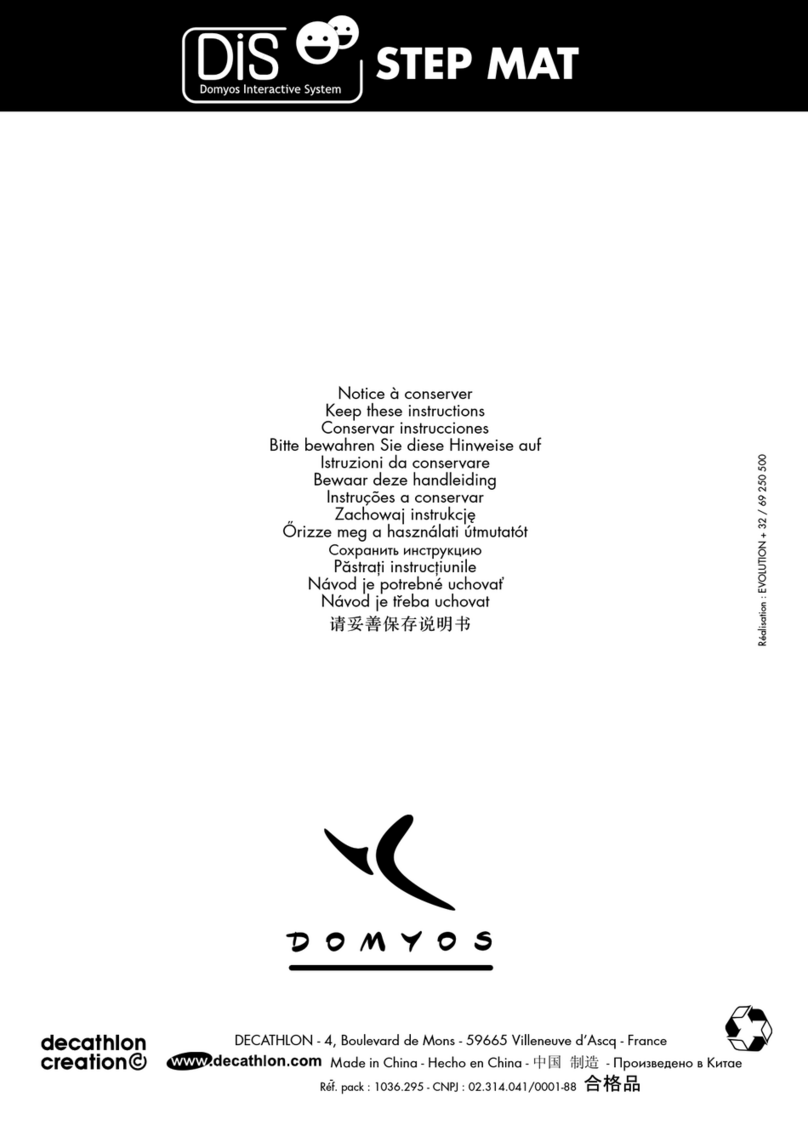
Decathlon
Decathlon Domyos DIS Step Mat manual
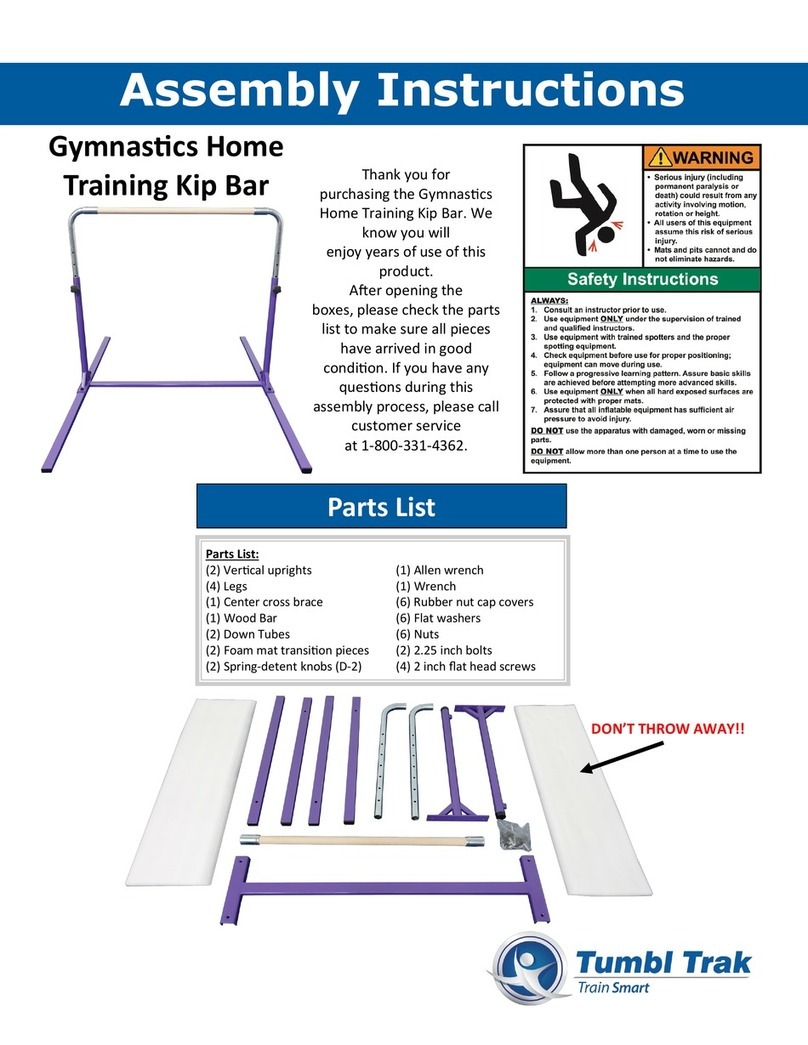
Tumbl Trak
Tumbl Trak Gymnastics Home Training Kip Bar Assembly instructions
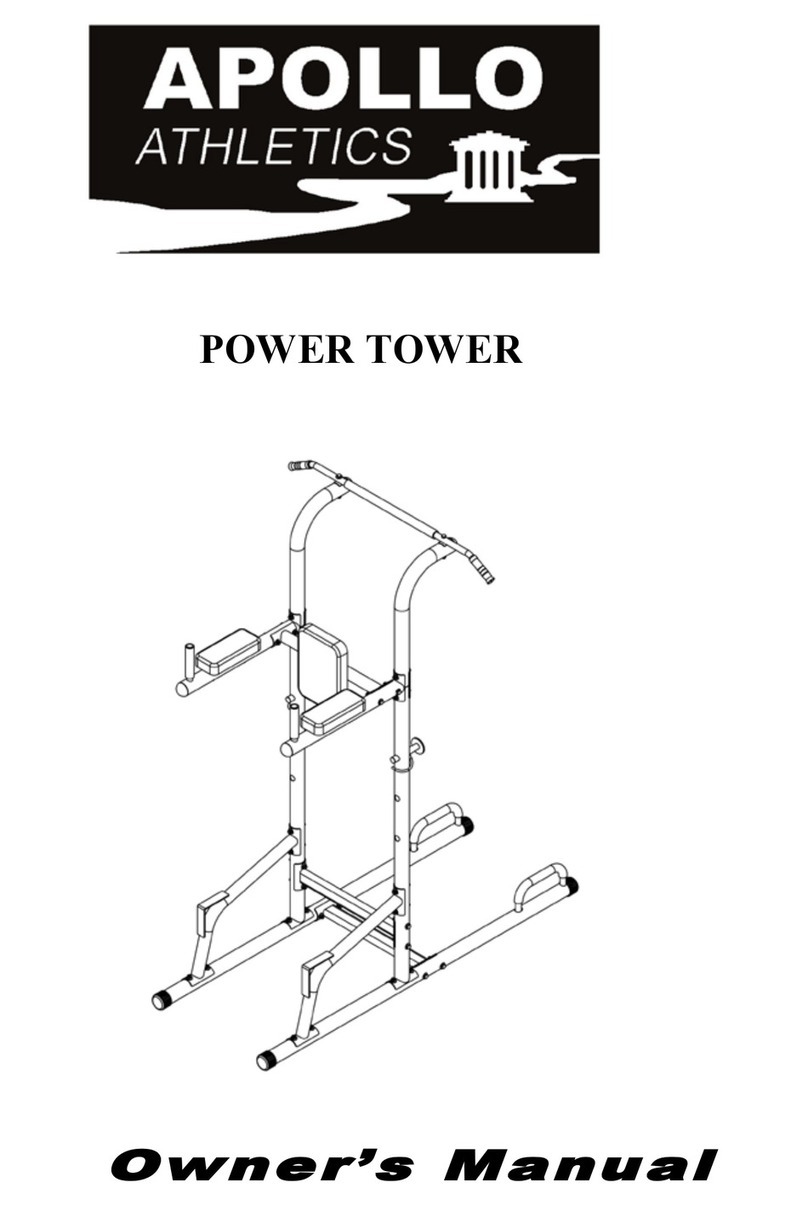
Apollo Athletics
Apollo Athletics Power Tower owner's manual
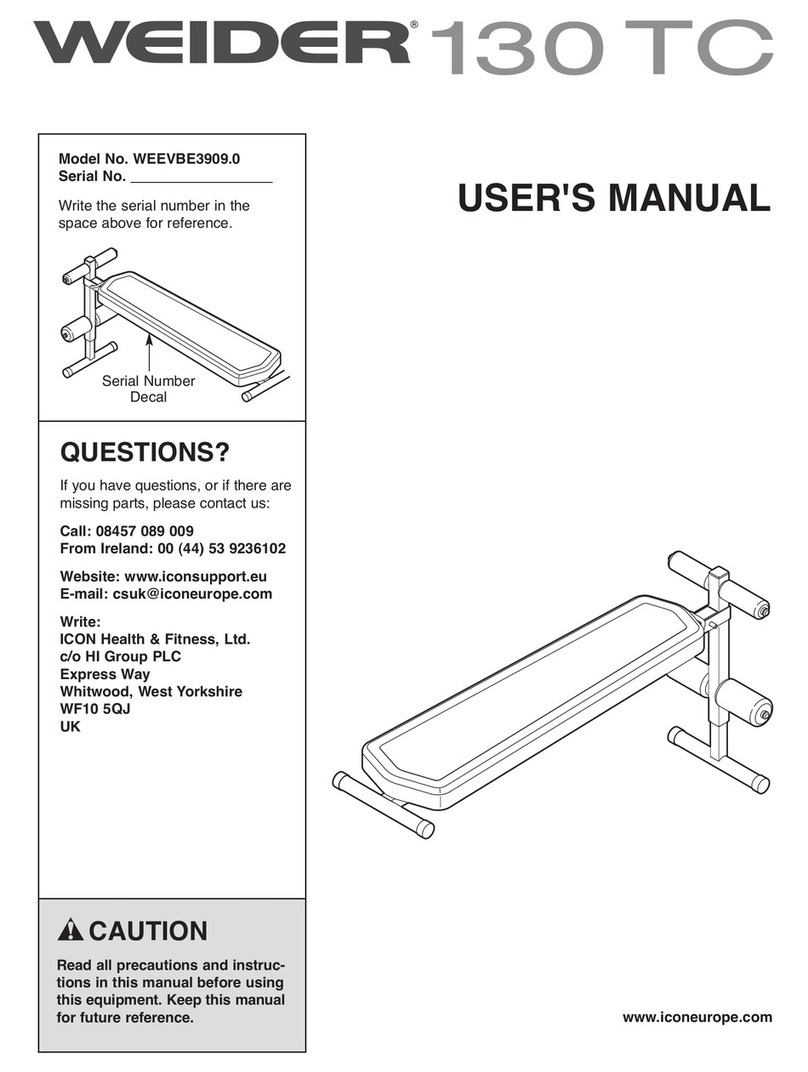
Weider
Weider 130 Tc Bench manual
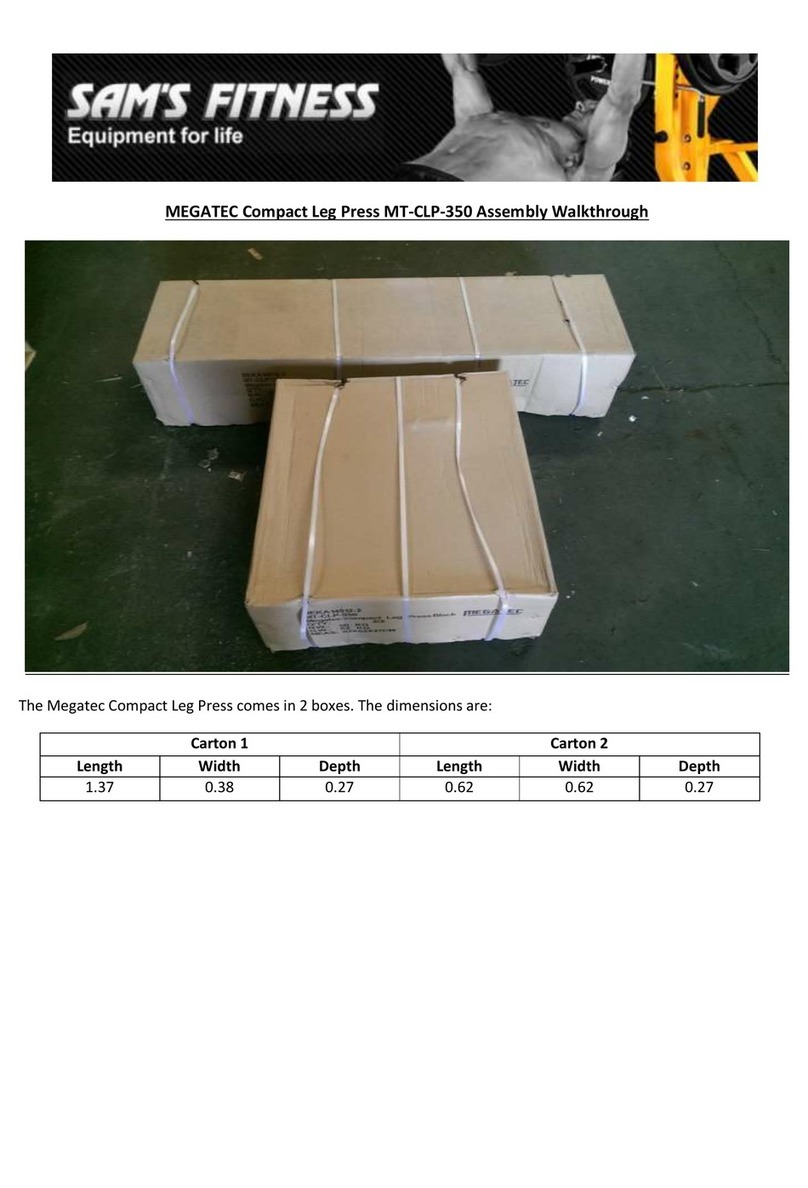
MegaTec
MegaTec MT-CLP-350 Assembly Walkthrough
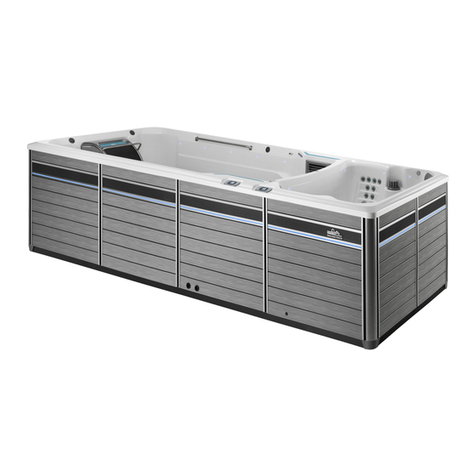
Endless Pools
Endless Pools E2000 owner's manual

Evo
Evo ReNegaDE ARC100 instruction manual

Ironman Fitness
Ironman Fitness Gravity 4000 owner's manual
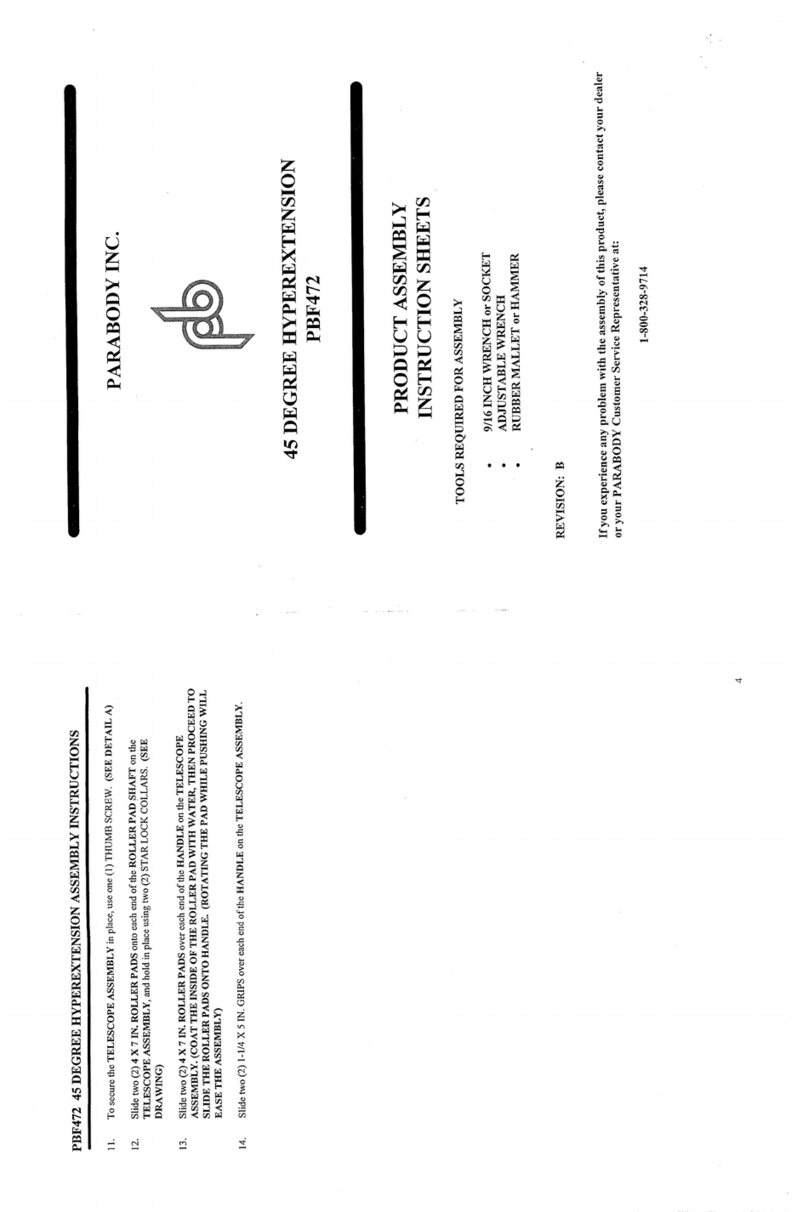
ParaBody
ParaBody PBF 472 instruction sheet

Matrix Fitness
Matrix Fitness PCTV Service manual
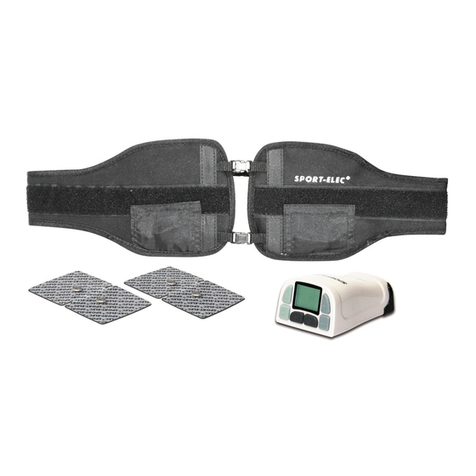
SPORT ELEC
SPORT ELEC BODY CONTROL SYSTEM user manual
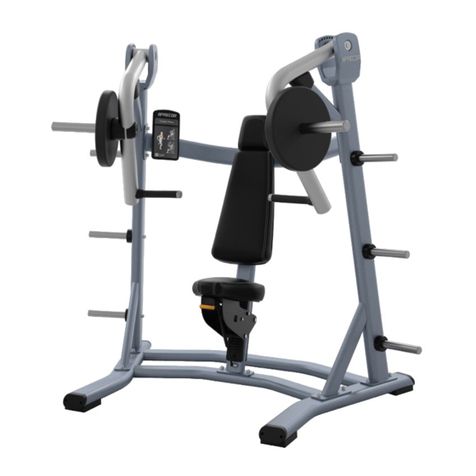
Precor
Precor Discovery Plate Loaded Pulldown Assembly guide
